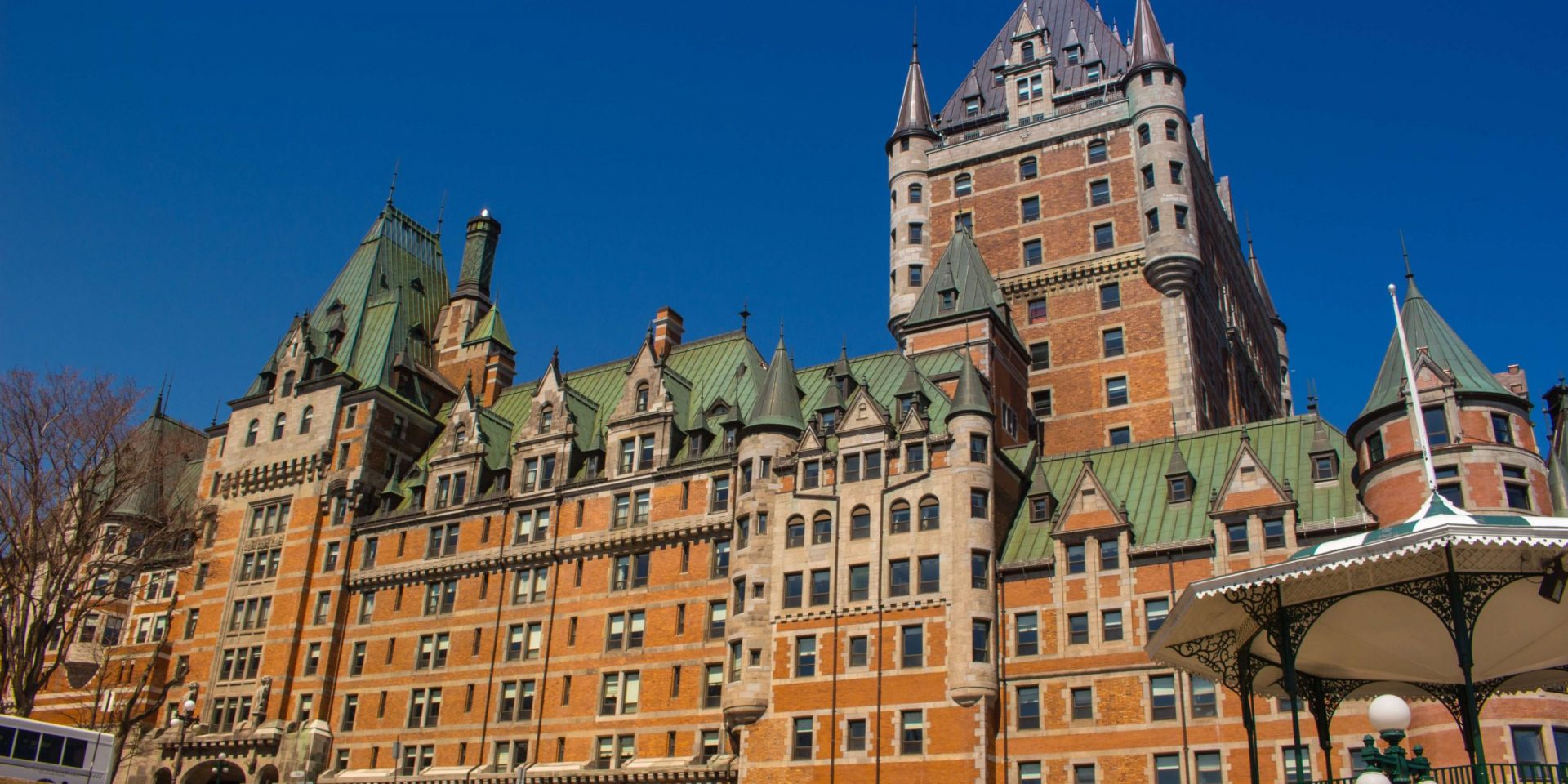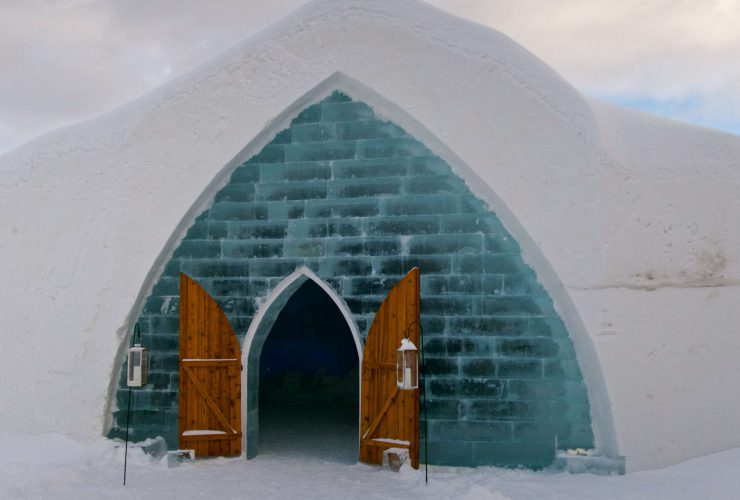Embarking on an educational journey through toponymy
Did you ever stop to wonder about the names that surround you? The name of a bridge, of a church or of a concert hall maybe? When I was a kid growing up in Sherbrooke in the province of Quebec, I remember a project where all the street names were being replaced for new ones with the added origin of the street name under the text.
For instance, one of the main arteries of the city is the Portland Boulevard. It now reads “Portland – Ville du terminus ferroviaire (1853)”. It refers to the railroad that runs through Sherbrooke that was built to connect the city of Montreal and the city of Portland in Maine in 1853. The idea behind the Saint-Lawrence & Atlantic Railway was to link Montreal and the Atlantic Ocean in order to facilitate the transport of merchandise on the East Coast.
As a child, I used to think that a name was just a name, but through such stories, I realised that a name is not just a name. It is so much more. It’s a token of our heritage, it’s a piece of history and it’s a way to remember our roots and our ancestors. Once you start wondering where this and that name came from, it’s like embarking on an historical journey with twists and turns and the excitement of not knowing precisely what you will discover. I invite you to follow me on such a journey, to explore the origin of some of the best-known names in the beautiful city of Quebec, Bon Vivant Educational Tours’ most popular travel destination.
Preserving and enhancing Quebec City’s unique urban landscape, one stone at a time
We will begin our toponymic exploration with the iconic Dufferin Terrace, which owes its name to Lord Dufferin. Interestingly, Lord Dufferin was not born in Canada but in Italy in 1826. Nevertheless, he spoke both French and English. His full name was Sir Frederick Temple Hamilton-Temple-Blackwood, 1st Earl of Dufferin. (What a name!) He was the third Governor General of Canada and had an immense passion for Canadian unity, as described on the Parliament of Canada website. It was under his leadership that Prince Edward Island became part of the Canadian federation in 1873. He was also the first governor to start using the Citadel in Quebec City as an official residence in the summer. We can most certainly be grateful to Lord Dufferin since he was the one to persuade Quebec City officials not to destroy the fortifications back in the 19th Century. The walls were built as a defensive system between 1608 and 1871 and attest to the rich military history of both French and British colonies.
However, in wanting to expand the city and adapt to the population growth, it was discussed to tear down the walls and open up the old city center to facilitate access. In the years 1875-1880, Lord Dufferin opposed the demolition of the fortifications and for that reason, this 4.6 kilometer-long construction is still here for us to enjoy today. Not only that, Quebec remains the only city north of Mexico to have preserved its fortifications. This unique feature has contributed to making Quebec City a UNESCO World Heritage Site. Now how’s that for a piece of history? Additionally, it was Lord Dufferin himself who set the first stone in the floor during the Terrace’s renovations in 1878, extending the previously built Durham Terrace. Now 430 meters long, the extended Dufferin Terrace offers a pristine view over the Saint-Lawrence River, Lévis and the lower-town. It has been an important social meeting point for centuries. It also provides access to the majestic Chateau Frontenac and probably offers the best spot for a group photo on your next trip to Quebec City.
Fort Saint-Louis and the French monarchs
In 2008, in light of the 400th anniversary of Quebec City, the ruins of Fort Saint-Louis, which had been preserved under the Dufferin Terrace for many years, were opened to the public. Fort Saint-Louis was first built in 1620 as the seat of power for the colony. Samuel de Champlain moved there after initially living in his first Habitation in lower-town (where Place Royale is now located). Situated at the top of Cap-aux-Diamants, Fort Saint-Louis had a pristine view on the Saint Lawrence River and soldiers could see ships coming in from Europe or elsewhere. In addition, the steep cliff offered a natural protection.
For over 200 years, during both French and British rule, decisions taken at Fort Saint-Louis contributed to shaping the “New World”. Continuing our exploration of toponony and the study of place names, their origins, and meanings, why was the original fort named “Saint-Louis”? One thing that is often observed in Quebec is that many names start with “Saint” or “Sainte”. This attests to the catholic faith of the French colonizers. Churches were built quickly in New France and the Catholic religion influenced the toponomy of the area. For instance, the construction of the Cathedral-Basilica Notre-Dame de Québec, now a national historic site, dates back to 1647. Earlier, in 1620 when Fort Saint-Louis was built, the governor of New France represented the king of France, then Louis XIII. The fort was therefore named after him. “Place Royale”, which also refers to the French monarchy, received its name in 1686 when a bust of King Louis XIV, the son of Louis XIII, was installed there.
Jacque Cartier’s mistaken discovery
As can be seen on the map above, Quebec City was built alongside the Saint-Lawrence River. Since the city was built on the steep Cap-aux-diamants, governors of New France believed that it would be almost, if not impossible, for intruders to attack the colony on that side. Little did they know that the British soldiers would successfully climb on the steep cape during a surprise attack in 1759 and take over the settlement. As with Lord Dufferin and Kings Louis XIII and Louis XIV, places have been named after people. But in the case of Cap-aux-diamants, the name wasn’t given after someone. It comes from the fact that in 1541, Jacques Cartier mistook quartz stones for diamonds. Later on in 1603, Samuel the Champlain also observed the quartz along the coast and mistook it for diamonds, explaining why the location was named “Cape Diamond” or “Cap-aux-diamants” in French. In the early years of the settlement, many places would also be named according to the geography of the land.
The word “Quebec” for instance is of Algonquin origin and means “where the river narrows” or “narrow passage”, referring to the geography of the area and the Saint Lawrence River. First Nations had an oral tradition and many of the names that they used were descriptive. Many places in Quebec still have names of aboriginal origin. For instance, Chibougamau, Chicoutimi and Mistassini are all Quebec Cities that have conserved their Amerindian name. Chibougamau means “meeting place”, Chicoutimi means “the end of the deep water” and Mistassini means “big rock”. Through the course of my research, I found out that many cities have documents that list the meanings and origins of local names. Tip for teachers: Why not ask your students to find out about the origin of their home street name for their next assignment?
In-class activities for students
The exploration of just a few names and places, have made us travel through multiple centuries, different continents and various cultures. Toponomy holds bits and pieces of history and its educational content is infinite. In our second unit about the history of Quebec City and its military past, we have developed 14 pre- and post- tour educational activities to do in class. They provide an opportunity for teachers and students to prepare for their upcoming educational tour to Quebec and familiarize themselves with this unique UNESCO World Heritage Site. There are also follow-up activities that allow for reflection on the tour and what was learned.
These activities are in line with the Atlantic Canada Framework for Essential Graduation Learnings in schools. They also explore elements of the Social Studies, French Language Arts, Science, Mathematics, Technology as well as the Arts’ curriculum outcomes. At Bon Vivant Educational Tours, we are all about bringing history, language and culture to life for students before, during and after a tour. We hope that you will enjoy doing these activities with your students just as much as we enjoyed developing them for your class!




